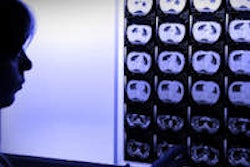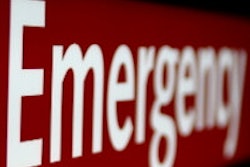If one list of unnecessary medical procedures is good, then two lists should be better, right? That could be the thinking behind a new list released this week in JAMA Internal Medicine of unnecessary tests in emergency medicine that are driving up healthcare costs. And the new list takes aim specifically at medical imaging.
The new list isn't officially part of Choosing Wisely, the campaign launched by the American Board of Internal Medicine (ABIM) to identify wasteful medical tests. But the criteria used by the group from Partners HealthCare in Boston to develop its list could represent an improvement over that initiative, in which each medical specialty contributes five tests that it believes are overused.
The authors of the current paper believe their top five list is more transparent, more carefully developed, and better executed than the Choosing Wisely lists (JAMA Intern Med, February 17, 2014). However, their list also takes closer aim at radiology, with medical imaging exams taking four of the five spots on the new list -- compared with just one of five on a similar list released in October 2013 by the American College of Emergency Physicians (ACEP) as part of the Choosing Wisely initiative.
The value of top 5 lists
The ABIM Foundation launched the Choosing Wisely program in 2012 with the idea of enabling medical societies to tackle healthcare overutilization on their own, before government regulation or prior authorization review from third-party payors took control. The idea was to have each medical society contribute five medical tests in its specialty that it believes may be overused.
Dozens of medical societies have contributed their lists, including the American College of Radiology (ACR) and ACEP. The program hasn't been without controversy; ACEP initially declined to join the campaign in 2012 before shifting gears and agreeing to sign on. When the society released its list of five unnecessary procedures last year, it included one imaging exam, advising emergency physicians to "avoid computed tomography (CT) scans of the head in emergency department patients with minor head injury who are at low risk based on validated decision rules."
The authors of the current article decided to develop their own list after ACEP initially declined to join Choosing Wisely. Dr. Jeremiah Schuur, Dylan Carney, and colleagues from Partners HealthCare detailed the methods they used to arrive at their conclusions, which included assembling a technical expert panel (TEP) and identifying the top five low-value clinical procedures using a four-step process.
To begin the creation of any such list, Schuur and colleagues wrote, there should be clear evidence that the tests or treatments can lead to potential harm or offer little benefit to patients. There should also be evidence that they are frequently misused in medical practice, have measurable results, and are under the control of healthcare providers.
The group took the following steps to develop its list:
- Generated a list of low-value clinical decisions by having the expert panel brainstorm and solicit submissions from clinicians
- Ranked the decisions based on their contribution to cost, benefit to patients, and actionability by clinicians
- Surveyed ordering clinicians from six emergency departments regarding distinct aspects of each item
- Had the panel vote for a final top five list based on survey results and discussion
The panel started with 64 low-value medical exams in phase 1. These were narrowed to 17 items, which the expert panel voted on for inclusion in the final top five. One test -- CT of the cervical spine without prior rule application -- received unanimous support from the panel, while four tests received majority support.
Thus, the top five low-value medical exams are as follows:
- CT of the cervical spine for patients after trauma who do not meet the National Emergency X-Radiography Utilization Study (NEXUS) low-risk criteria or the Canadian C-Spine Rule
- CT to diagnose pulmonary embolism without first risk stratifying for pulmonary embolism (pretest probability and D-dimer tests if low probability)
- MRI of the lumbar spine for patients with lower back pain without high-risk features
- CT of the head for patients with mild traumatic head injury who do not meet New Orleans Criteria or the Canadian CT Head Rule
- Coagulation studies for patients without hemorrhage or suspected coagulopathy (e.g., with anticoagulation therapy, clinical coagulopathy)
Redberg offers support
In an accompanying editorial, Dr. Deborah Grady and Dr. Rita Redberg, both from the University of California, San Francisco, along with Dr. William Mallon from the University of Southern California, offered their opinion that the new list is superior to what has been developed by Choosing Wisely.
"Although many professional societies have published 'top five' lists, most have not detailed the methods by which the list was created," they wrote. "In some cases, it is clear that the lists were developed without much input from front-line practitioners, using a process that was not transparent and without clear criteria for inclusion on the list."
Illustrating the point, Schuur and colleagues noted in their article that some of the Choosing Wisely lists include tests that are not actionable by the medical specialists for which they were developed. For example, the Choosing Wisely list submitted by ACR includes the item "avoid imaging for uncomplicated headache." This type of study is difficult for radiologists to influence in light of the fact that "radiologists interpret images but do not directly influence the ordering process."
"The challenge of translating guidelines into practice has been well-described, so measuring actionability is a critical initial step in developing a top five list," Schuur and colleagues wrote.



















